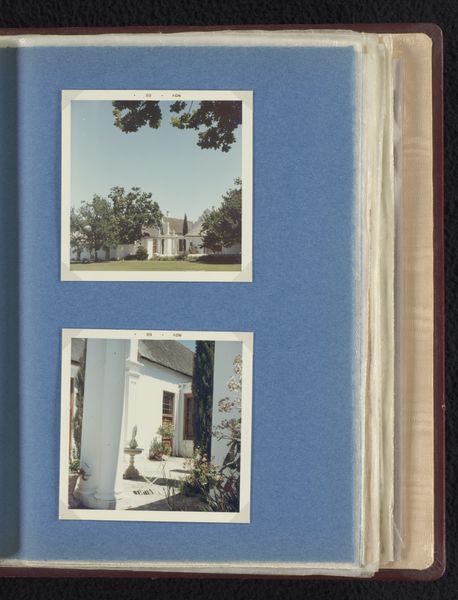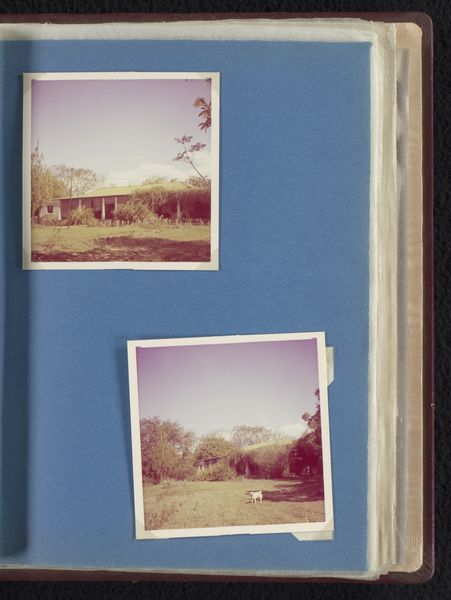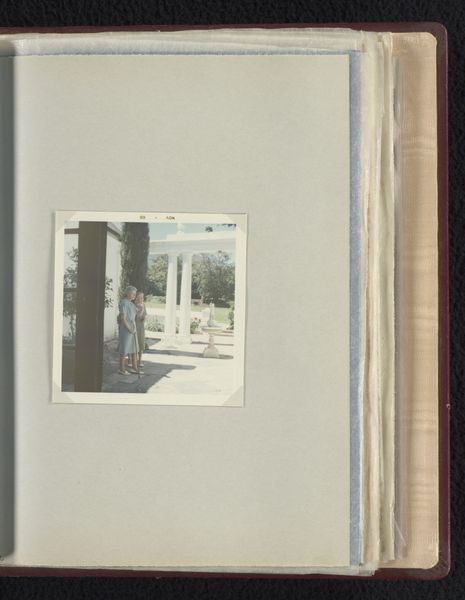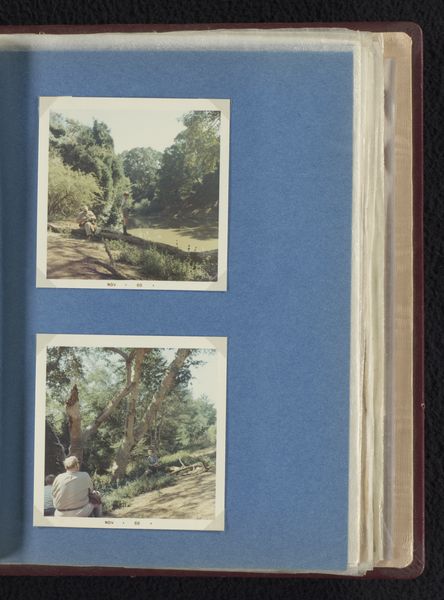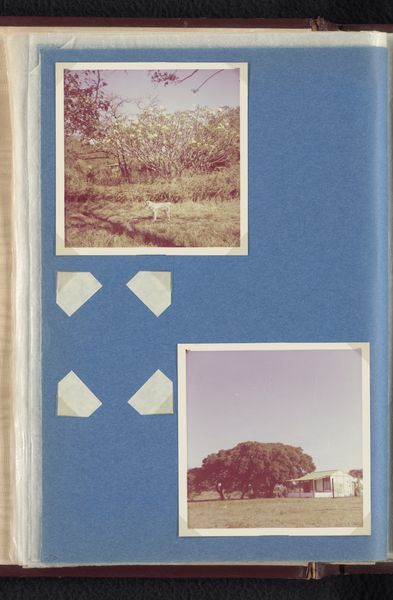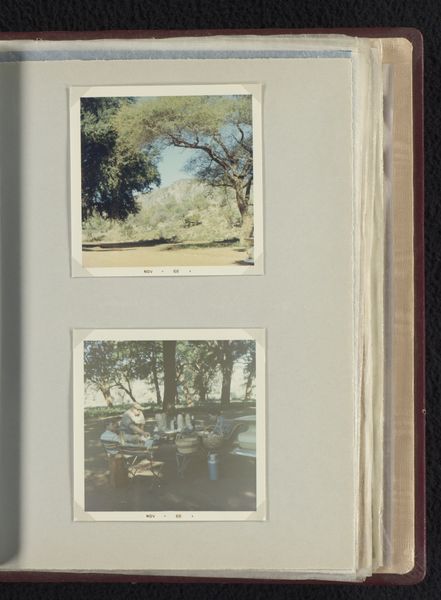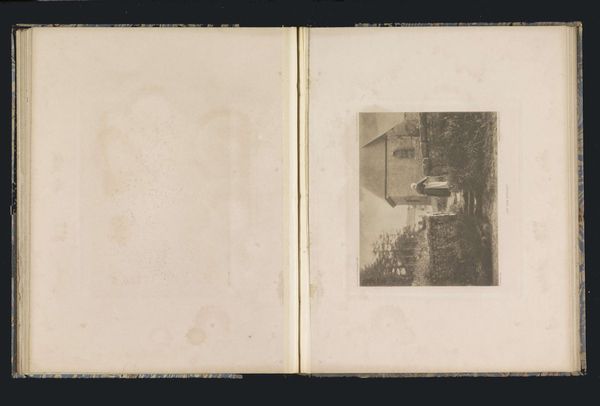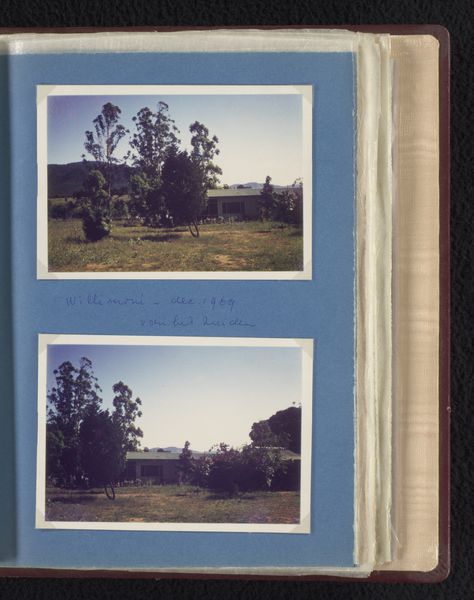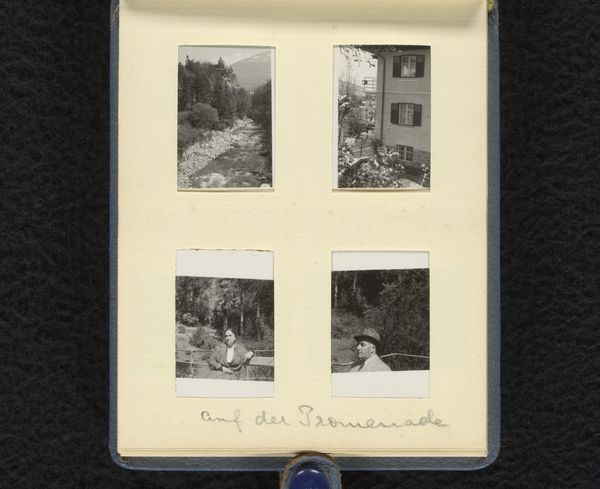
Onbekende vrouw met hond bij de wijngaard Waterhof in Kaapstad, en een dorpsgezicht in Zuid-Afrika 1967
0:00
0:00
photography
#
landscape
#
photography
#
coloured pencil
#
genre-painting
Dimensions: height 240 mm, width 190 mm
Copyright: Rijks Museum: Open Domain
Curator: This photograph from 1967, taken by Willem Jacob van den Berg, presents an intriguing view of the Waterhof vineyard in Cape Town, capturing a woman and her dog against the backdrop of both colonial architecture and the landscape. Editor: It's immediately striking how sun-drenched it appears. The contrast between light and deep shadows evokes that midday heat, that laid-back stillness specific to such climates. A perfect visual depiction of indolence. Curator: The details are fascinating. Notice the woman in her patterned dress, a common motif evoking femininity and status within colonial photography, set against a house, clearly built in the Cape Dutch style—representative of cultural and historical intersectionality in South Africa at the time. Editor: Right. We can read the domestic space as an emblem of settled life, the way that colonial power attempts to normalize and naturalize occupation, the shadow and light also read as the darkness of colonialism against a new landscape. Curator: Precisely, this juxtaposition tells a story of integration—the wine yard and landscape hinting towards bounty while the building whispers of permanence, echoing the ways European identities entrenched themselves in African landscapes. The presence of the dog? Further reinforcing an element of settled domesticity, mirroring a long tradition of dogs symbolizing loyalty. Editor: And isn't it remarkable, that we find it on the page of an album, encased and kept. Its photographic medium itself becomes a part of this dialogue of how visual memory can solidify selective narratives, carefully arranging versions of cultural identity, but also how such private or intimate memory may conflict or intersect with wider collective histories. Curator: An extremely keen observation. Through Van den Berg's eye, this tableau offers a poignant look into a moment framed within a society shaped by intricate and competing historical forces, and a story embedded still within those landscapes today. Editor: Exactly. By reading into images such as these, we excavate, acknowledge and maybe begin the process of understanding a truly complex historical past and continuing colonial legacy.
Comments
No comments
Be the first to comment and join the conversation on the ultimate creative platform.
